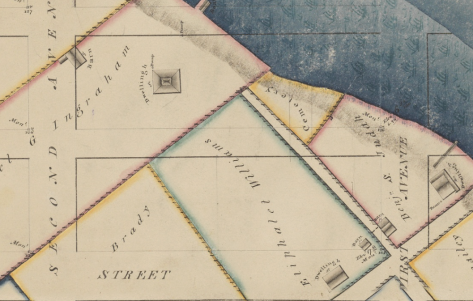
Soon after the Dutch village of New Harlem was established in 1658, its settlers organized a Reformed Dutch Church to meet the community’s religious needs. Meeting informally at first, by 1665 they had raised the funds to construct their first house of worship near the Harlem River, at what is now the corner of 125th Street and First Avenue. In 1667, a plot to the north of the church was established as the community’s first official burial ground, where interments of Harlem’s founders and their descendants were made for many years. In 1686, Harlem’s Reformed Dutch Church relocated to a new building on property just south of their original church and later established a new cemetery at that site. The original cemetery, located at 126th Street and First Avenue, would come to be known as the Negro Burying Ground.
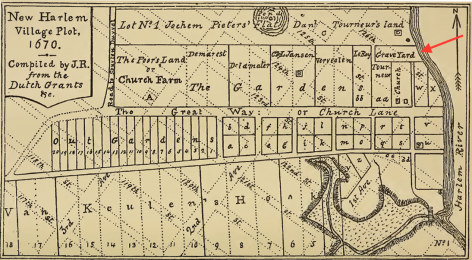
The first documented African Americans in New Harlem were slaves purchased in 1664 by the village’s settlers, who used slave labor to work their expansive farms and help build and maintain the settlement. By 1790 a census tally of the Harlem district found 115 slaves working upper Manhattan’s farms and estates, roughly one-third of the population. It is not known when African Americans were first interred at Harlem’s original village burial ground at 126th Street, but at some point the eastern end of the graveyard was designated for that purpose. By 1771 it was formally identified as the “Negro Burying Ground” in historical documents.

After emancipation in 1827, freedmen and women, working their own farms or continuing as servants on Harlem’s estates, created a small African American community centered around Little Zion, an uptown mission established on East 117th Street by downtown’s Mother Zion (the African Methodist Episcopal Church). Blacks also were part of the Harlem Reformed Dutch Church and joined other churches that opened in the area. African Americans of all denominations were buried in the Negro Burying Ground at 126th Street.
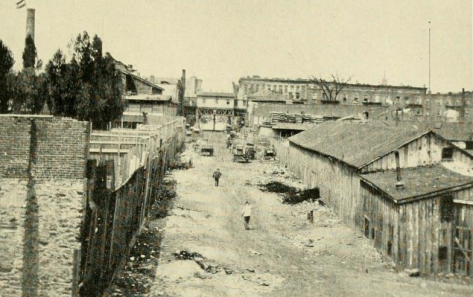
Harlem’s original black population diminished as new immigrant groups moved into the area during the second half of the 19th century. Though African Americans would return to Harlem in great numbers in the 20th century, transforming it into a black metropolis, the area’s first black community—and their burial ground—was largely forgotten. The Negro Burying Ground was supplanted in the 1880s by a pleasure and amusement ground known as Sulzer’s Harlem River Park, then by a movie studio, and, in 1947, by a bus depot.
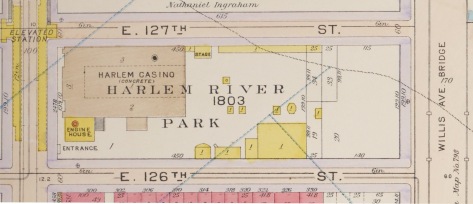
Today, the Harlem African Burial Ground site is located under the southeastern corner of the MTA’s decommissioned 126th Street Bus Depot, which covers the entire block bounded by First and Second Avenues and 126th and 127th Streets. Documentary evidence of the quarter-acre burial ground came to light during planned rehabilitation of the depot, and in 2015 archaeological testing uncovered human remains there. Although no intact burials were found, discovery of a skull and over 100 bones confirmed the site’s history. A task force that includes community members and representatives from Harlem’s Elmendorf Reformed Church, the descendant congregation of Harlem’s original church, was formed to work with the city to redevelop the depot appropriately. Designated the 126th Street Harlem African Burial Ground Memorial and Mixed-Use Project, future redevelopment plans include a memorial and cultural center to acknowledge the site’s significance.
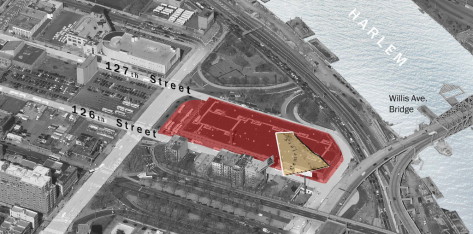
While the exact number buried in Harlem’s African Burial Ground is not known, the task force has been combing through church records to piece together details about the site. Their examination has yielded the names of 40 individuals believed to have been interred there. Historical newspapers offer clues of others laid to rest in Harlem’s African Burial Ground. An 1857 obituary for Charlotte Lewis, a domestic worker, notes her remains were interred in the “burying-ground of the colored” at Harlem. In the New York Times’ 1859 coverage of the sensational death of Harmon Carnon, “a respectable and industrious colored man” killed by his Cuban son-in-law in a murderous rampage, the “Colored Cemetery at Harlem” is mentioned as Carnon’s burial place. Continued research and memoralization of Harlem’s African Burial Ground will offer an opportunity to honor the lives of those interred there and preserve an essential piece of the city’s history.
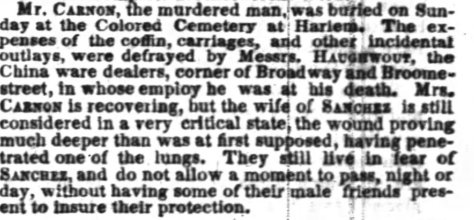
Sources: Randel’s 1820 Farm Maps, No. 67; Bromley’s 1914 Atlas of the City of New York, Pl 13; [Notice], Daily Advertiser Jan 23, 1802; New Harlem Past and Present (Pierce 1903); Revised History of Harlem (Riker 1904); Greater Gotham: A History of New York City from 1898 to 1919 (Wallace 2017), 846; Topic Intensive Documentary Study, Willis Avenue Bridge Reconstruction (Historical Perspectives, Inc., 2004); Phase 1B Archaeological Investigation 126th Street Bus Depot (AKRF 2016); “Died,” New York Times, Jan 31, 1857;“The Escaped Murderer, Sanchez,” New York Times, Jan 13, 1859; “Sulzer’s Harlem River Park,” New York Age, Nov 19, 1927; “Rezoning a Block in Harlem, Respecting an African Burial Ground,” New York Times, Sept 26, 2017; 126th African Burial Ground Memorial & Mixed Use Project (NYCEDC); Harlem African Burial Ground Task Force
